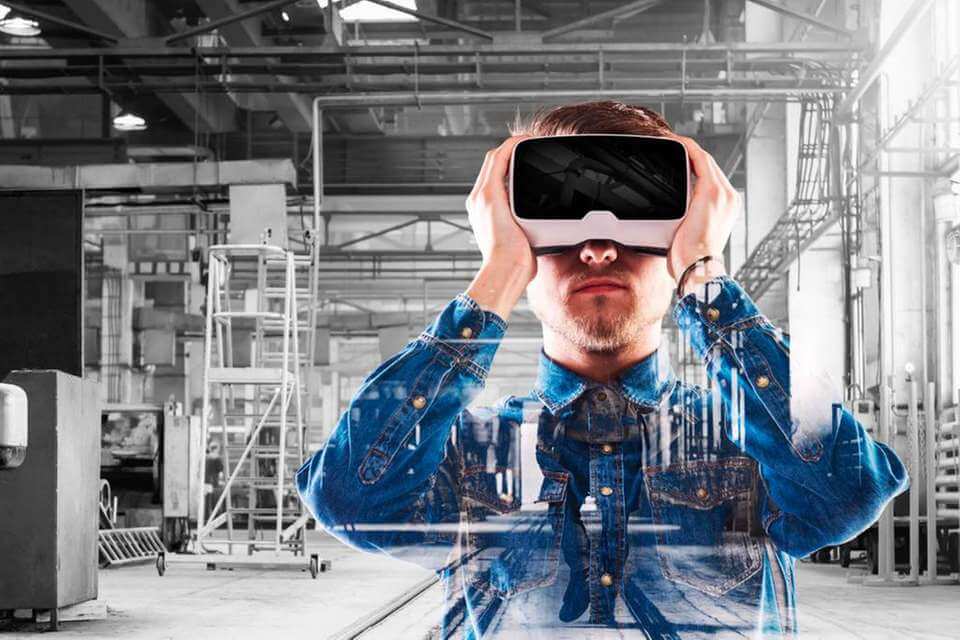Comments
- No comments found

Training employees can take time and resources away from production and expansion.
While necessary, hard skills training on the job can be a hard pill to swallow for any company, big or small.
Hard skills training with virtual reality is an excellent alternative training method that engages employees in a fun and meaningful way while also reducing overhead. Your workers can learn new skills or go through refresher courses without any drawbacks of on or off-site training.
Virtual reality is the future of hard skills training, and the future is now. Below, we’ll go over several types of hard skills training with virtual reality. Keep reading to find out how virtual reality can improve your organization’s workflow and decrease training costs across the board.
Organizations in many different industries use VR to train their employees on proper safety procedures. Whether as a refresher course or new employee onboarding, safety protocols are essential for companies to maintain a safe and efficient workflow.
Fire safety is often the first VR course that management uses to teach hard skills with virtual reality. However, fire drills take valuable time away from the floor, meaning the administration must stop work to prepare employees to deal with a potential fire on a work site.
If your company regularly works in different locations, teaching worksite safety can be even more time-consuming and complicated than usual.
Instead of pulling an entire team off production for safety training, virtual reality allows you to remove just a few employees at a time. Then, once they complete their VR safety procedures course, you can rotate to a new group of workers.
Smaller groups mean fewer distractions and more personalized learning, leading to better workers and standardized practices. Plus, studies have shown that workers enjoy VR training more than classroom or drill training. As a result, VR training can reduce production downtime while increasing employee learning retention simultaneously.
We helped IEP Technologies (Hoerbiger) develop a quick VR safety tutorial for their manufacturing team.
It was important and necessary for their employees to learn about the hazards and potential solutions for problems on the job. However, the company spent far too much time on training and was looking for ways to improve its performance.
Our VR course streamlined the learning process and reduced downtime dramatically compared to their previous training course for handling hazardous materials.
The final product, more dynamic and engaging than its predecessor, brought the safety presentation down from two or three hours to only five minutes.
Many industries, like construction or mechanical maintenance, operate in hazardous work environments. As such, training new employees on the proper ways to do their job can often be time-consuming and even dangerous. However, new hires have to learn somehow, or you wouldn’t have hired them in the first place.
Virtual reality offers a radical approach to new employee onboarding in dangerous industries. In the past, management would have to assign a new worker to a more experienced worker to learn the ropes. Now, simply hook new hires up to a VR headset and run them through a training course that teaches them everything they need to know.
By implementing virtual space onboarding, companies can maintain workflow efficiency while preparing new hires to increase production once they hit the floor. The hard skills they’ll learn in VR directly translate to how they will do their job in real life.
One example of this sort of VR onboarding is our collaboration with Avangrid Renewables, a renewable technology construction and maintenance firm. We helped Avangrid develop a VR training platform to streamline their onboarding process for new maintenance workers.
New members of their maintenance crew could perform mock scenarios that standardized learning efficacies and improved their performance in the field. As a result, Avangrid had better-equipped employees that could respond safely and more efficiently to the requirements of the job.
Outside of your typical VR safety training like fire and hazardous materials, emergency VR is one of the best ways to keep your employees and workplace safe. By implementing a comprehensive and engaging emergency safety course, employees can develop the hard skills necessary to get out of the situation alive.
Imagine an armed intruder enters your facility, threatening not only your employees’ lives but your company’s operations. A VR training simulation can train your staff where to go and what to do in scary situations like this.
VR showcases the hard skills needed to survive and the soft skills required to deal with the emotional stress of the situation. While an in-person presentation may be informative, it won’t go nearly as far as VR training can.
In Toronto, we helped Thales Group prepare its employees for an emergency bomb scare. Being a security company, it handles many emergencies. It needed a way to prepare for situations in which workers might crack under pressure.
In “Keep Talking and Nobody Explodes,” workers learned the hard skills necessary to defuse a simulated bomb. Additionally, they quickly developed the critical thinking required to adapt to a rapidly changing and volatile situation.
By preparing for the encounter in a VR environment, workers could safely learn from their mistakes and improve without the risk of actually exploding.
Virtual reality provides an unprecedented opportunity for companies to save more time and resources on better training than ever before. Although VR is popularly used to improve soft skills, there is a growing demand for teaching hard skills in a virtual space as well.
However, not taking advantage of innovations in VR training could mean your staff is less prepared than your competitor, giving them a headstart in a rapidly changing industry.
Leave your comments
Post comment as a guest